Our second field season studying pollinator visitation to Oregon native plants and native cultivars spanned from April to late September of 2021, although if Douglas Aster had any say in the matter, we would likely still be sampling. The densely blooming Symphyotrichum subspicatum continued to produce a smattering of new flowers through November of last year, and we predict it will do the same this year, too!
Our field crew this summer included Tyler, Svea, Mallory and I. Together, we sampled on 33 different dates across the growing season, allowing us to collect around 2000 physical pollinator specimens, and observe 6,225 unique interactions between pollinators and our study plants! This season we conducted floral trait measurements (including the dimensions of flowers), took multispectral photos, and additionally collected pollen from a subset of our study plants.



From left to right: Mallory vacuum-sampling off of Douglas Aster 'Sauvie Snow', Tyler shaking a farewell-to-spring flower to get pollen off of it, and Svea photographing Baby Blue Eyes 'Penny Black'.
This year, we introduced a third cultivar for California poppy (Eschscholzia californica ‘Purple Gleam’), yarrow (Achillea millefolium ‘Moonshine’), and farewell-to-spring (Clarkia amoena ‘Scarlet’). The new cultivars were established in the spring, which resulted in a late bloom for the annuals, so we expect to see them blooming during their typical period in 2022. The Achillea ‘Moonshine’ replaced Achillea ‘Salmon Beauty’ in being the most abundant yarrow cultivar; it began blooming almost immediately as it was planted into our field site and is still continuing to push out blooms through October alongside the Douglas Asters.

The plant groups in our study: the larger circles with orange text are the native plants, and the smaller circles and turquoise text are the cultivars. The top row contain the perennials yarrow, western red columbine, great camas, and Douglas aster. The bottom row shows the three annuals farewell-to-spring, California poppy, and baby blue eyes.
In addition to watching new plants bloom in the study garden, we had the opportunity to observe many incredible pollinators in the field this summer. We saw a hummingbird visit the Western Red Columbine, we tried to capture videos of leaf-cutter bees snipping little petal pieces off of farewell-to-spring, and at a neighboring plot we observed a male wool-carder bee section off an entire patch of Salvia for a female bee.




On the left: Farewell-to-spring 'Scarlet' with crescents cut out of the petals by leafcutter bees. Top right: A female wool-carder bee (Anthidium manicatum) collecting trichomes from Yarrow 'Calistoga'. Middle right: A leafcutter bee with a piece of petal from Farewell-to-spring 'Dwarf White'. Bottom right: A leaf cutter bee removing a piece of petal from Farewell-to-spring 'Aurora'.
We were also able to take a couple educational field trips this field season in order to learn about pollinator studies ongoing outside of Oak Creek. In June, we went up to the North Willamette Research and Extension Center in Aurora, OR to listen to three talks about pollinators at the Blueberry Field Day. We learned how to score the productivity of honeybee hives, how to properly don a the top of a bee suit, about blueberry’s best pollinators, and blueberry research projects at the University of Washington.
In August, we made a trip to Bend for a different kind of study… an artistic one! We travelled to the High Desert Museum in order to visit Jasna Guy and Lincoln Best’s exhibit “In Time’s Hum…”. Jasna is a brilliant artist inspired by pollinators, which translates into the subject of her pieces as well as her artistic media. Many of her pieces are made using encaustic (a method of painting using wax, bee’s wax in her case!), dipped directly into bee’s wax, or involve pollinators in some other format, including her color study of pollen, which attempts to replicate the colors of fresh pollen as well as the colors after bees have mixed them with nectar. In the center of exhibit were two cases filled with bees collected and identified by Linc, surrounding some of the dried plant specimens they forage on.
These field trips were a wonderful way to see what other pollinator work is happening in our broader community and to inspire future studies. It was especially exciting to see how Jasna and Linc combined art and science with their exhibit, which is something many of us in the Garden Ecology Lab are interested in.
1. Mallory, Svea, and Jen at the blueberry Field Day. 2. Svea, Jen, Mallory, and Tyler at the High Desert Museum. 3. A panorama of the "... In Time's Hum ... " exhibit. 4-5. Art on the outside of the exhibit. 6. A snapshot of two pollen samples from Jasna Guy's pollen color study.
While we cannot make conclusions until we complete our final field season, we are excited to report some of the variation in visitation between native plants and native cultivars that we have observed in our first two field seasons. In the first field season, our observations of native bees foraging on the study plants revealed three plant groups to have variable amounts of visitation. Yarrow, farewell-to-spring, and California poppy all had at least one cultivar that received substantially less native bee visits than the native type. In our second year, all three of farewell-to-spring’s cultivars received less visitation than the native Clarkia amoena. Poppy had only one cultivar with less native bee activity than the native (Purple Gleam), and in the case of Douglas Aster, both of the cultivars actually had more visitation by native bees than the native.
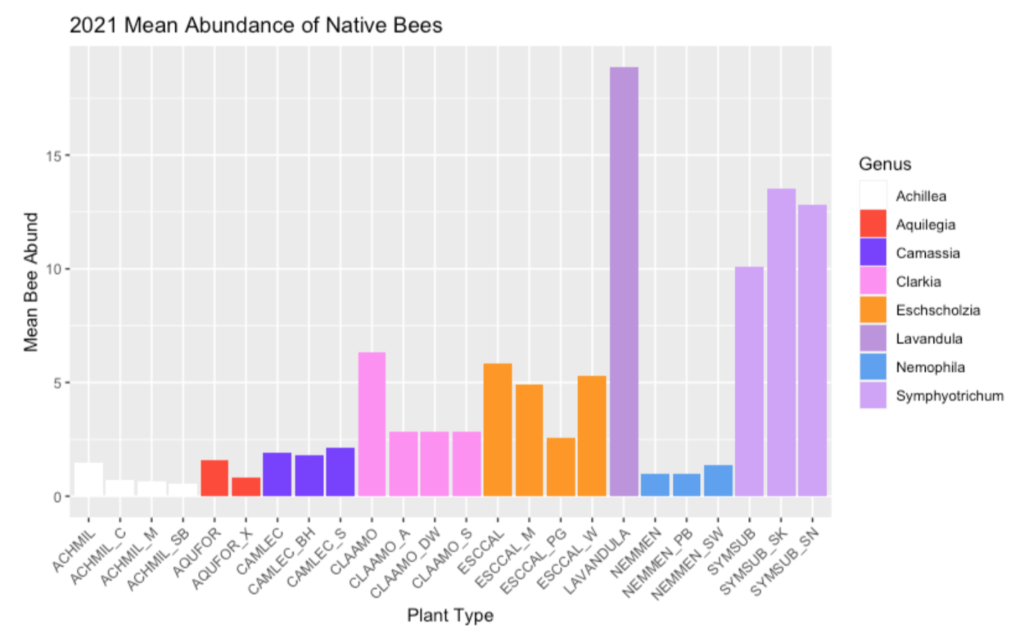
Figure 1: Average Abundance of Foraging Native Bees during 5-Min Observations in 2021. Individual plants are color-coded by genus. The naming scheme combines the first three letters of the genus and specific epithet; cultivars are denoted by an underscore and a 1-2 letter code to identify them. For example, AQUFOR is the native Aquilegia formosa, and AQUFOR_XT is Aquilegia x ‘XeraTones’.








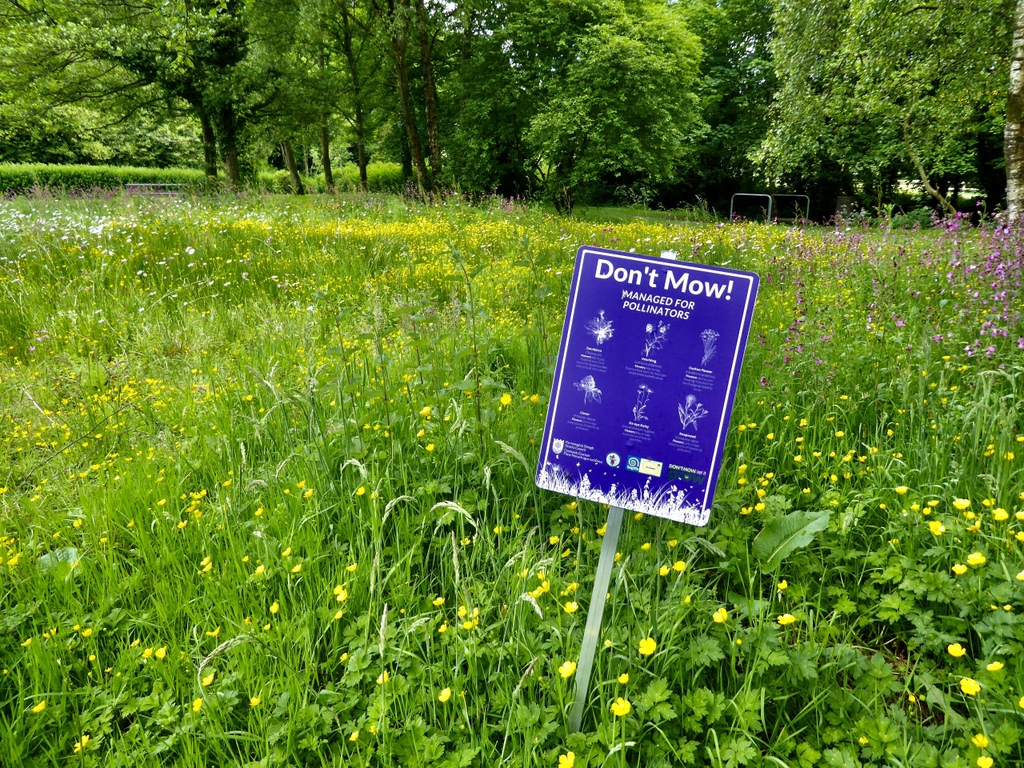
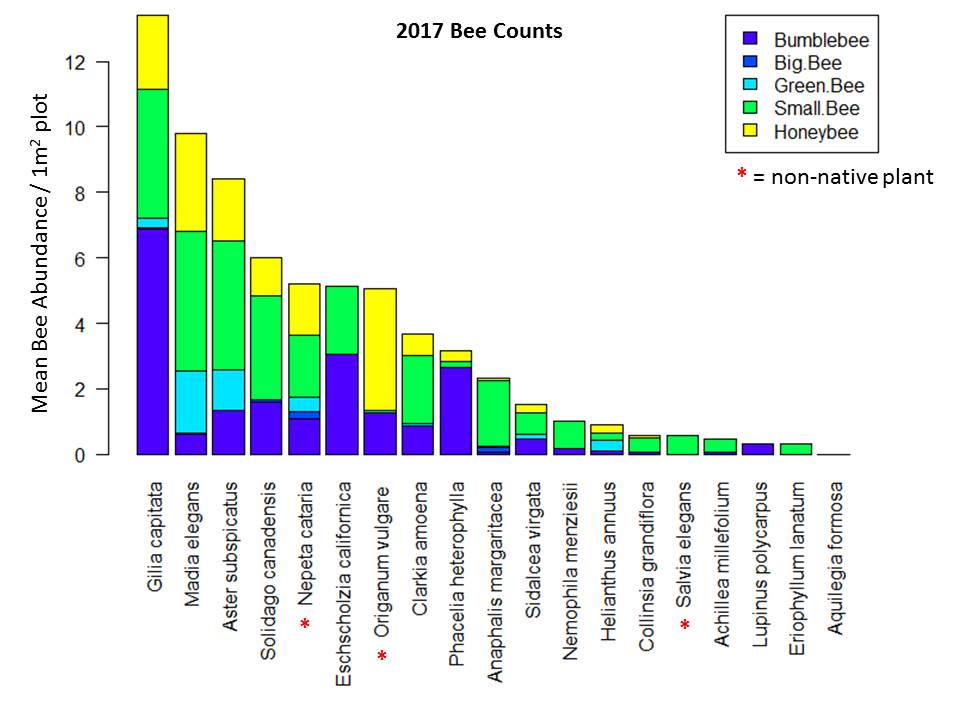
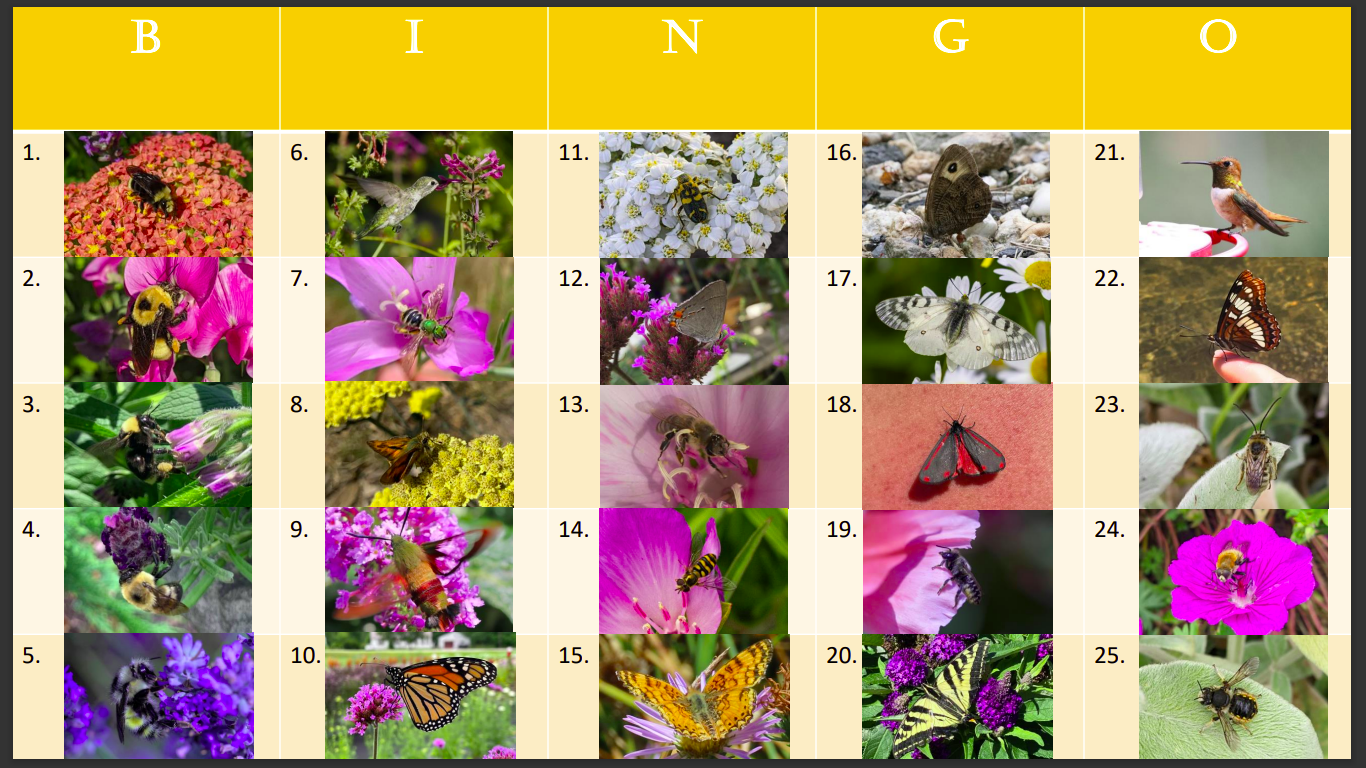
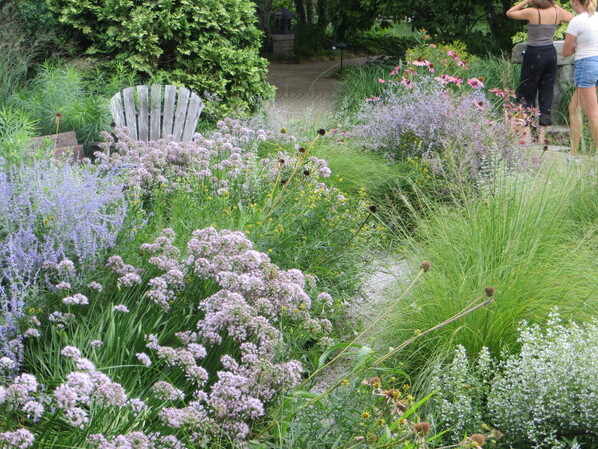
4 Comments
Add Yours →Hi, I{m wondering if you have final results from the nativar research project? I’m a Master Gardener at the University of Georgia extension, and we are trying to compile a list of beneficial nativars and those that are significantly less beneficial that the native speices.
Thanks, Diane Neuhauser
Hi Diane. Not yet. Jen has one more year of field work, and then it will likely take another 18 months to do the lab work, analyze data, write up results. Research progress (particularly the type that involves season-long fieldwork) takes time and patience.
Thanks for your interest in this work.
Like Diane, I would be most interest in an update in 2023 on this really important topic. I am a member of the Association of Professional Landscape Designers, and would like to bring members of our profession up to speed on important work being done in their climate zones or areas. Would it be possible to put me on your mailing list? Thank you in advance! Martine Jaworski
Martine,
You can find this year’s update here.